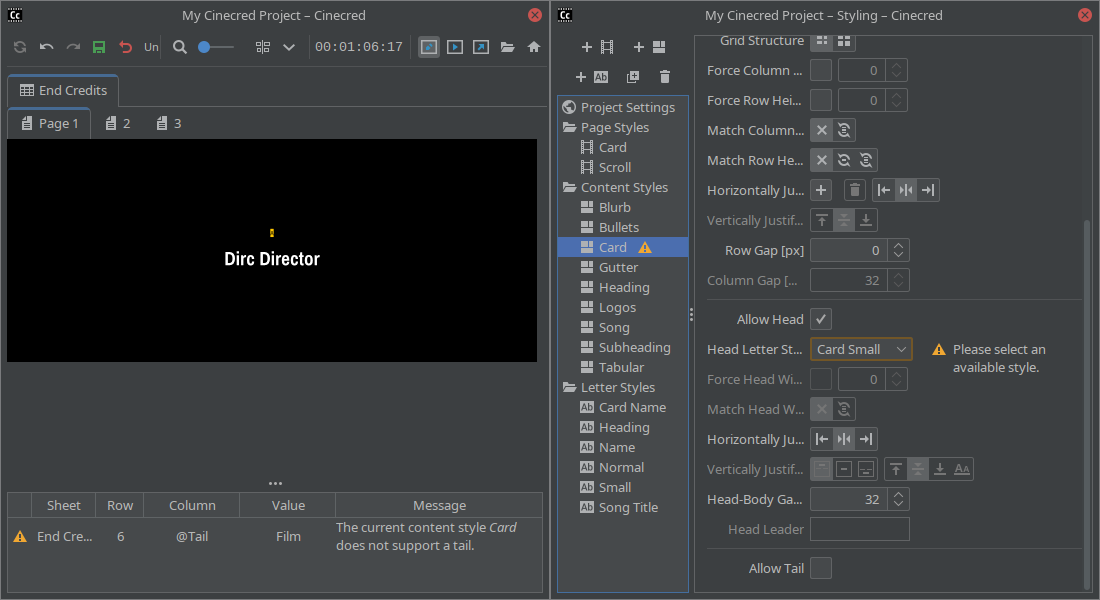2. User Interface
When opening a project in Cinecred, a main window comes up that snaps to the left side of the screen. There exist three additional windows for performing specific tasks. You can show and hide these additional windows via three buttons in the main window.

Main Window
But first, let’s focus on the main window. Most of its area is occupied by a still preview of your credits.

Sometimes it’s hard to visualize how the layout falls in place. To this end, Cinecred adds helpful layout guides to this preview, which you can of course turn off for an unobstructed view. Hovering over the toggle brings up the following legend:
- — Page runtimes & card screen bounds
- — Spines
- — Body cells
- — Maximum whole body width
- — Head and tail bounds
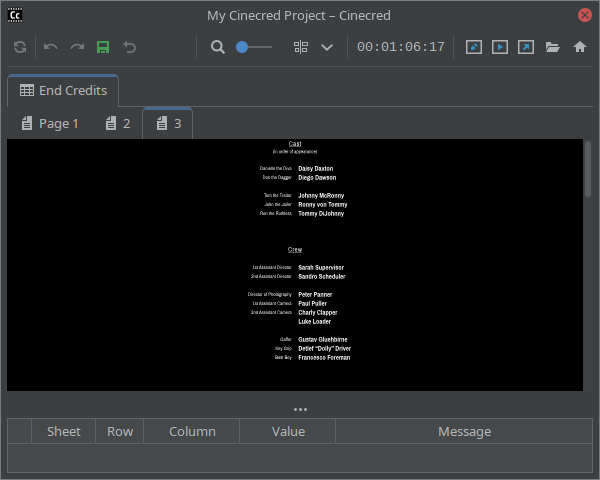
If you need to conform to safe areas or ensure that your credits fit inside a 16:9 or 4:3 crop, use the corresponding buttons in the dropdown menu to enable overlays.

Further, you can add custom overlays in the preferences tab in the welcome window. Choose between a custom aspect ratio crop, a set of custom horizontal and vertical helper lines, and a custom image that is laid over or under the preview:

Styling Window
The styling window lets you edit the project settings as well as the page, content, and letter styles. Click on a style in the list to edit it. Click on one of the plus buttons above to add a new style, or the trash button to delete any style. Use the save button in the main window to save your changes. There, you’ll also find undo and redo buttons.

And if you’ve styled yourself into a corner, use the load last saved button to revert all your changes. The current styling will be retained as an undo state.
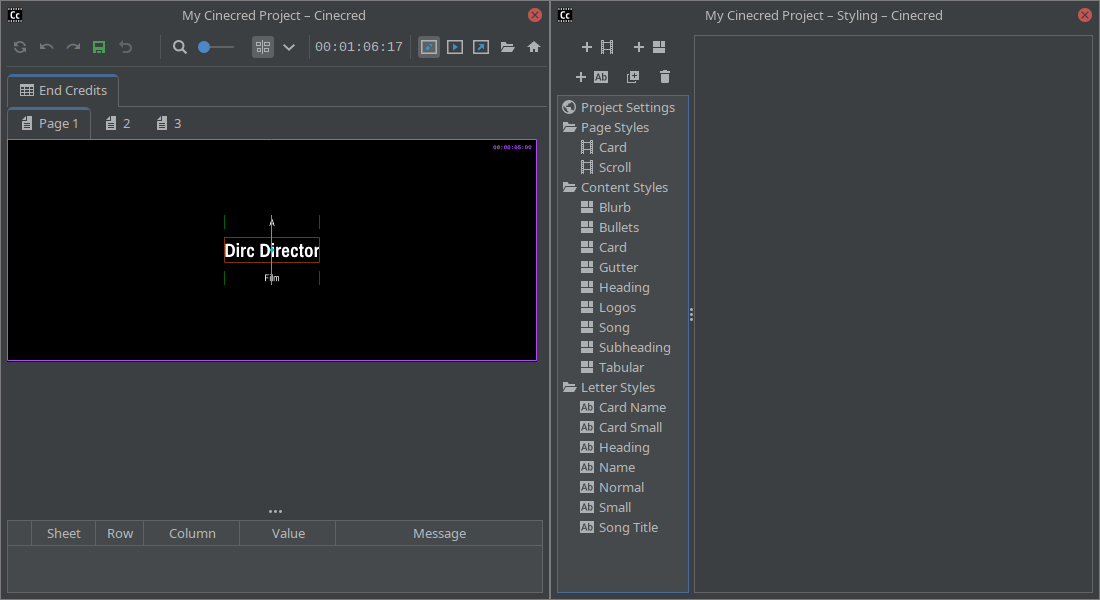
By default, the styling window snaps to the right side of the screen. We advise you to snap the spreadsheet editor to the same place. This way, you can use the styling window toggle button to switch between the styling window and the spreadsheet editor while working on your project.

Video Preview Window
At any time, you can open the integrated video preview window to watch your credits in action. You may use the familiar JKL shuttle keys to play at varying speeds. It’s also possible to toggle full screen or 1:1 actual pixel size playback.
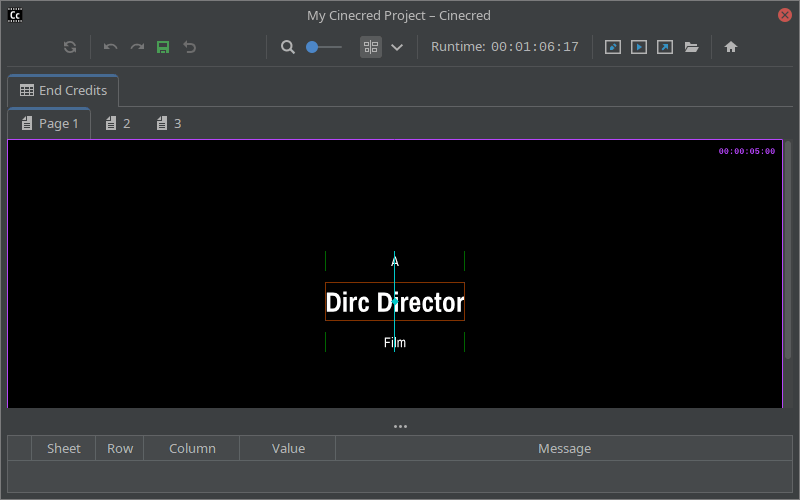
Cinecred can also play out the preview to DeckLink cards. If one is detected, DeckLink buttons are added to the playback controls, and a handy secondary control bar appears in the main window. Click the gear to select a line and to configure the playout stream, then click the connection button to start the playout. The configuration will be memorized on restarts.

Delivery Window
When you’re ready to export, you’ll find manifold delivery options in the delivery window. Aside from ProRes and DNxHR video, various image sequence formats and H.264/H.265 previews are available. Or just export stills of title cards and entire scrolling sections as PDF or images for your colleagues to check. If you embedded videos, you may also export a CSV or EDL timeline of them to precisely align their audio later in finishing.
Some formats directly support a transparent background via the Color Channels and Alpha Channel option, which is handy if you intend to use the credits in compositing. For other formats, you can export the isolated alpha channel as a grayscale matte via the Only Alpha Channel option.
If you need a higher or lower resolution or higher frame rate version of your credits, use the resolution and frame rate multipliers.
Some formats support interlaced output. You can choose the field order in the Scan menu. Notice that the fields will really be sampled at double the frame rate. For example, if the scroll speed is 4 pixels per frame, the credits will advance by 2 pixels each field.
If you are not familiar with color spaces, the default settings are likely the right choice. For advanced users, Cinecred offers a wide range of gamuts, EOTFs, and YUV matrices. Please refer to the color management page for details.
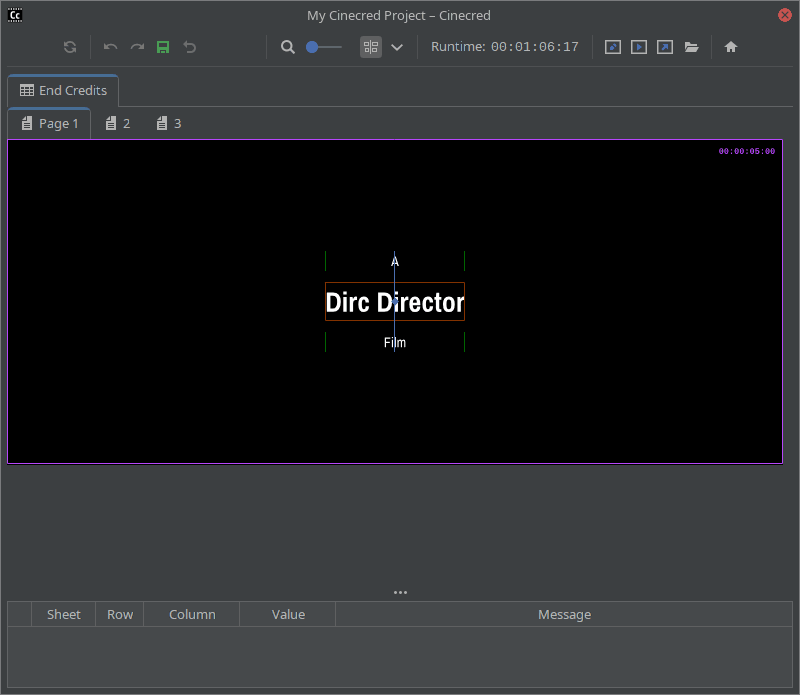
Warnings and Errors
Naturally, mistakes happen. When something’s wrong in the Credits file, Cinecred shows a warning message beneath the preview in the main window. Such warnings also establish some context to help you solve the problem.
In contrast, when something’s wrong with the styling, Cinecred shows a warning directly next to the problematic setting in the styling window.
